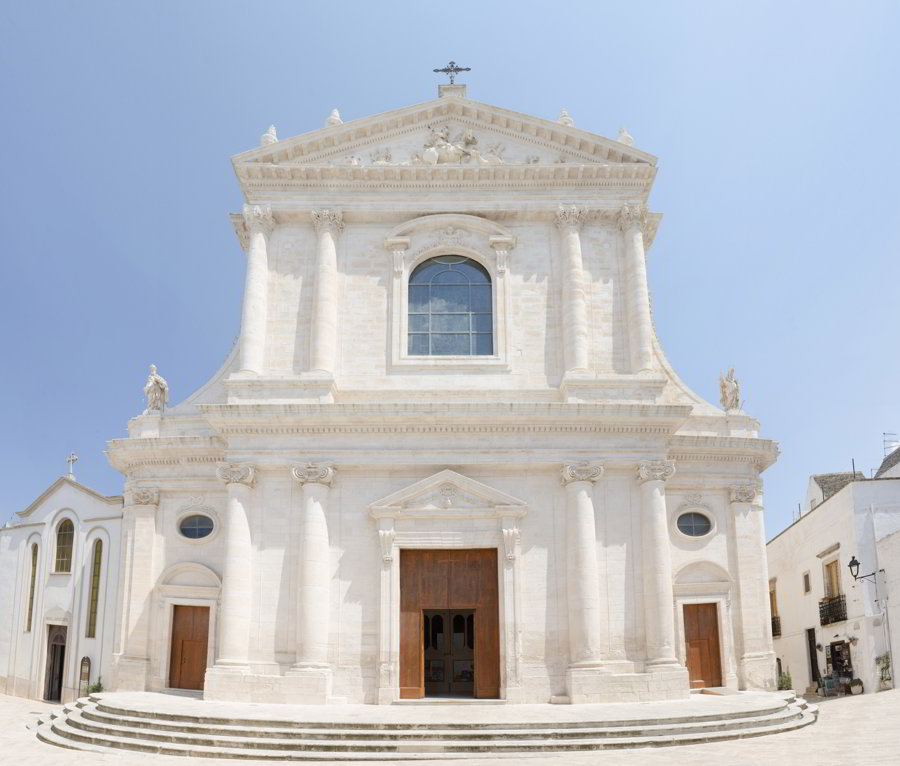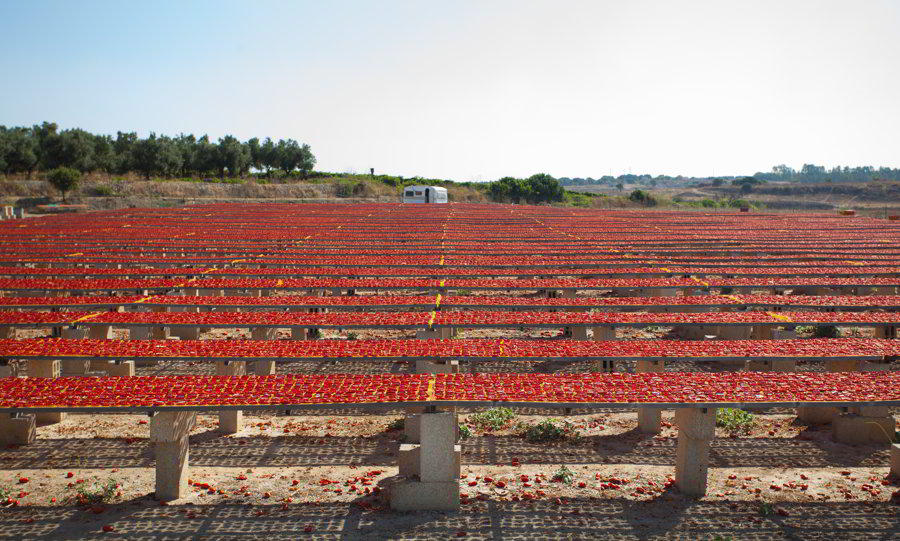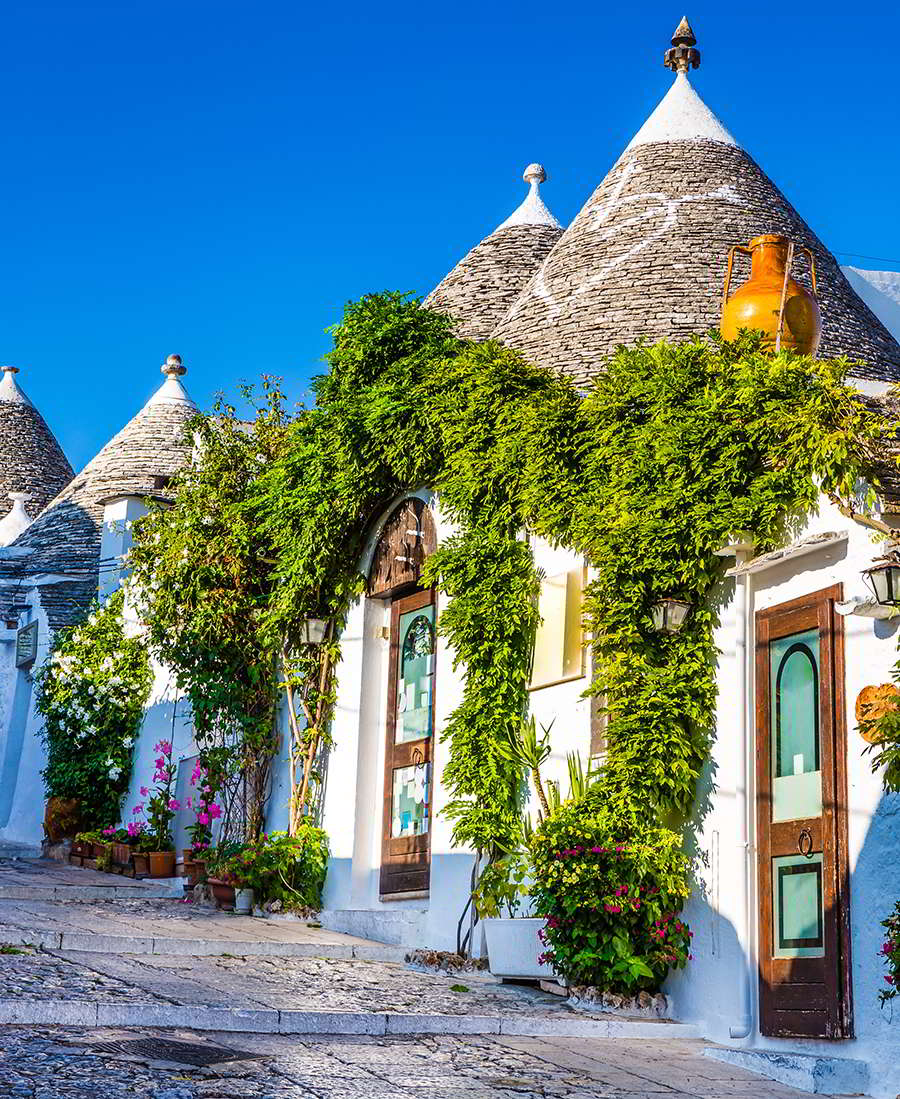THE “ITRIA VALLEY”
Origin of the name
The origin of the name “Itria Valley” derives from the Byzantine worship of the Odegidria; successively also the variants “Itria, Idria, S. Maria dell’Itria, S.Maria dell’Idra” spread. In turn, the name“Idria” derives (according to the scholar Bernardi) from the presence, in the place of Rugge, near Lecce, of a Church dedicated to S. Maria d’Idria, dated back to the XVI sec; here the Capuchins established their Convent, in 1533, the first in Salento, with the same denomination. The Monks, however, considered this Convent too miserable, left it and moved to Lecce, where founded another one, in 1570, at the Church of S. Maria dell’Alto. Bernardi, regarding the Convent of Rugge , gives a particular explanation of the Church titling:” … The temple was consecrate in the name of the blessed Virgin according to greek custom and was named S. Maria d’Idria, which means pomegranate”. The etymon- according to the eighteenth-century scholar- has to be linked to the fact that “pomegranate” in the greek language is translated with “roa”, or “roh” (flowing, flow) and could refer to an underground worship custom, that is in a cave, where water flows, became the temple of the goddess. This worship passed on the pagan culture and then in the Christian one. The toponym of the Convent started to be referred to the surrounding valley only in XVIII century and nowadays indicates the valley, that includes the towns of Locorotondo, Martina Franca, Cisternino, Alberobello, Ceglie Messapica, Ostuni and many others.
What to see
The towns located in the centre of the “Itria” Valley are: Locorotondo, Martina Franca, Cisternino, Alberobello, Ceglie Messapica and Ostuni, and many others. From the “Itria” Valley other important towns can be reached, such as Castellana Grotte, Monopoli, Polignano a Mare. In a few hours by car, it is also possible to visit Salento, with its Baroque cities.
You will also taste…
There are many places, where they will have the pleasure to take care of you, with typical products and flavors of Puglia.
The durum wheat orecchiette, the real apulian meatballs, the fresh juicy tomatoes and the unique mozzarella cheese, the aubergine parmigiana and a wide range of Extra- Virgin Olive Oils.


You will visit…
You can visit many places, not far from Locorotondo. Among them, there are Alberobello, Martina Franca, Cisternino, Ostuni, Egnazia, Monopoli, Polignano a Mare, Conversano, Bari, Taranto, Lecce, Matera. We suggest a careful visit to “Perle di Memoria” Museum situated in Locorotondo. The “Itria” Valley is in the very heart of Apulia and corresponds to the South part of the upland of Murge. It is also known as “Valle dei Trulli” and extends among the province of Bari, Taranto and Brindisi and includes the town of Locorotondo, Martina Franca, Cisternino, Alberobello, Ostuni and Ceglie Messapica.
The Characteristics of the Valley are Trulli, typical and exclusive houses in stone, with a conical shape; large farms and the rural landscape, generally speaking, whose peculiarity is the high usage of local stone to build dry-stone walls.
A fairy-tale scenario, a unique and imaginative view, orchards, olive groves and vineyards are the main plantations : tasty wines are produced here, such as “the White of Locorotondo” and the Extra-Virgin Olive Oil. The “Itria” Valley is a sequence of wonderful chromatic effects, a sparkling of colors, which go from the green of the little oak wood, the century-old olive trees and the vineyards, to the white of trulli and large farms.
The “Itria” Valley is crossed by the cycle path of Acquedotto Pugliese, a cycle itinerary built on the Main Canal communication trench of the big aqueduct, a giant work realized in the early 1900. The first 11km of this particular cycle lane – available from 2014- go through the two towns of Cisternino and Ceglie Messapica.